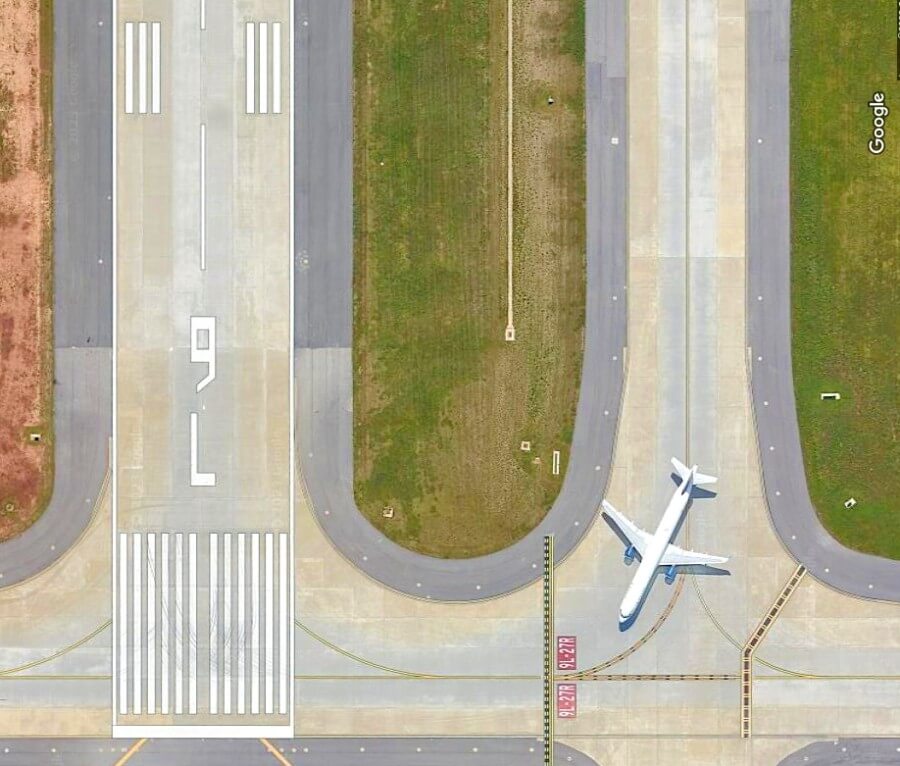Have you ever looked at an airport runway and wondered what those numbers at the ends mean? Those seemingly random digits actually hold a key to safe and organized aviation. Let’s dive into the intriguing world of runway numbering, unravel its principles, and explore its practical implications with a real-life example.
Picture yourself at Hartsfield-Jackson Atlanta International Airport (ATL), one of the busiest airports in the world. Among its multiple runways, let’s focus on Runway 9/27. At first glance, the numbers might seem arbitrary, but they hold essential information for pilots and air traffic controllers.
Runway 9/27 points out its magnetic heading in relation to the compass. Runway 9 indicates that it’s oriented approximately toward 090 degrees on the compass, which corresponds to an eastward direction. Similarly, Runway 27’s heading aligns with roughly 270 degrees on the compass, indicating a westerly direction.
Now, let’s apply the principles we discussed earlier. If Runway 9’s magnetic heading were, say, 94 degrees, we’d subtract the last digit (4) and round down, resulting in a runway number of 90. On the opposite end, Runway 27’s number would be 270, maintaining the 180-degree difference.
The use of parallel runways further highlights this numbering system. If Hartsfield-Jackson Atlanta International Airport has parallel runways oriented toward 9/27, they might be labeled as 9L (left) and 9R (right) or 27L and 27R, respectively.

The Earth’s magnetic north is not fixed; it gradually shifts over time due to changes in the planet’s magnetic field. This phenomenon, known as magnetic variation, means that runways need to be periodically renumbered to ensure accuracy. Airports in high-latitude regions experience more significant magnetic variation, necessitating more frequent adjustments.
Why do pilots choose a specific runway for takeoff or landing?
Factors like wind direction and velocity play a crucial role. Aircraft prefer to take off and land into the wind, as it provides greater control during these critical phases of flight. Wind directly opposite to the runway’s orientation, or a headwind, assists in reducing the groundspeed during takeoff and landing, ensuring optimal performance and safety.
In contrast, a tailwind—wind blowing in the same direction as the runway—can affect aircraft performance, potentially increasing the distance required for takeoff and landing. This is why pilots select runways based on wind conditions to maximize safety and efficiency. Air traffic controllers monitor wind conditions and guide pilots to appropriate runways accordingly.
While traditional runway numbering remains crucial for aviation operations, technology has introduced advancements like GPS navigation. However, understanding these numbers ensures a solid foundation for pilots and controllers, allowing them to seamlessly communicate and coordinate movements.
Curiosities and Examples
Denver International Airport (DEN): Situated at an elevation of 5,430 feet, DEN’s runways are numbered in correspondence with their magnetic headings, adding a unique challenge to pilots dealing with high altitudes and variable weather conditions.
London Heathrow Airport (LHR): Heathrow’s parallel runways 09L/27R and 09R/27L are an exception. They are not based on the magnetic heading but rather the true heading of 087 and 267 degrees, respectively. This anomaly is due to historical reasons and maintains consistency with the airport’s original runway numbering.
Singapore Changi Airport (SIN): The world’s longest runway, measuring approximately 13,123 feet, is found at Changi’s Runway 02L/20R. The “L” and “R” designate left and right parallel runways, respectively, further aiding pilots in orientation.
John F. Kennedy International Airport (JFK): JFK’s runways align with their magnetic headings, creating the necessity for unique runway designations like 13L/31R, accommodating the airport’s complex layout.
Sydney Kingsford Smith Airport (SYD): Australia’s largest airport, SYD, boasts parallel runways 16R/34L and 16L/34R. Despite the common practice of aligning runway numbers with magnetic headings, Sydney’s runways follow the true compass headings, providing an exception Down Under.
So, the next time you find yourself near an airport, take a moment to observe the runway numbers. They’re not just digits; they’re part of a complex system designed to guide aircraft safely through the sky. As you witness planes taking off and landing, you’ll have a deeper appreciation for the precision and order embedded in those seemingly simple numbers.
